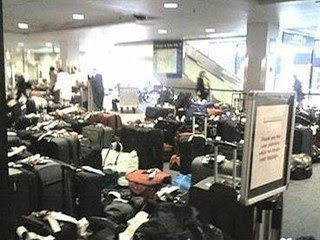
Posted by John McHale
If you don't want to lose your luggage fly Northwest not Delta... Wait a minute aren't they the same company? Yes, they are -- Delta bought Northwest last year -- but while they have many similarities, baggage tracking capability is not one of them, said Steve Gorman, executive vice president and chief operating officer for Delta Airlines.
Northwest ranks first in baggage handling while Delta is down near the bottom, Gorman said during his keynote address at the Avionics Maintenance Conference (AMC), run by the ARINC standards organization, in Minneapolis this morning.
Northwest has state-of-the art tracking software and scanners while Delta is just started adding modern baggage scanners recently, he continued. Gorman added that while all of Northwest will eventually be assimilated in Delta, its best practices and baggage expertise will be spread across Delta.
During his talk he spoke in depth about Delta's global reach and what Northwest brings to the company.
He said Delta's longest flight is from Atlanta to Bombay -- about 8,502 miles -- and its shortest is Detroit to Toledo -- 49 miles in 51 minutes gate to gate.
Sounds like less than 60 miles an hour...
Mapquest.com says it's only 57.82 miles from Detroit to Toledo -- about one hour and five minutes driving time.
If you fly the 51 minutes on Delta, you still have to add in another 60 minutes so you can check in and go through security. Then after getting luggage or catching a cab, maybe add another 30 minutes.
All said and done it's about two and half hours to fly 49 miles!
Is traffic that bad in Toledo that you need to fly from Detroit?

